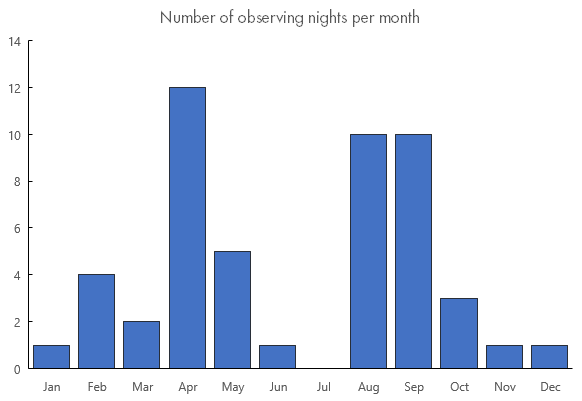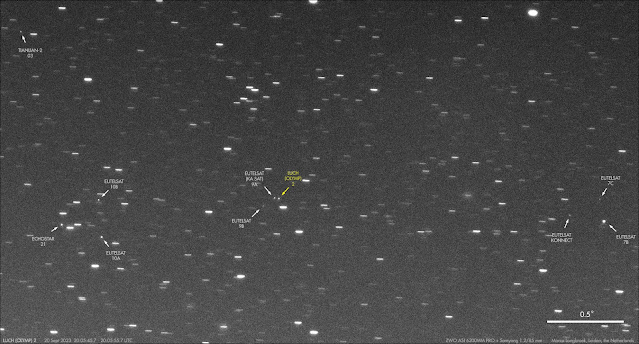 |
| click map to enlarge |
Over the past month, there was much anticipation for a (almost certainly) British Royal Navy Trident-II D5 SLBM test in the Atlantic. The arrival of the British nuclear ballistic missile armed submarine HMS Vanguard and several support ships at Port Canaveral in the past weeks suggested as much. Port Canaveral is the home base for such Trident SLBM tests.
And now the corresponding Navigational Warnings have appeared, for the period January 30 - Feb 4.
290215Z JAN 24
NAVAREA IV 89/24(GEN).
NORTH ATLANTIC.
WESTERN NORTH ATLANTIC.
1. HAZARDOUS OPERATIONS 302100 TO 040356 FEB
IN AREAS BOUND BY:
A. 29-00.00N 079-56.00W, 29-05.00N 079-35.00W,
29-00.00N 079-07.00W, 28-38.00N 079-06.00W,
28-36.00N 079-33.00W, 28-42.00N 079-52.00W.
B. 28-28.00N 076-03.00W, 28-19.00N 075-04.00W,
28-06.00N 075-07.00W, 28-16.00N 076-01.00W.
C. 27-03.00N 069-40.00W, 27-20.00N 069-37.00W,
26-58.00N 068-02.00W, 26-43.00N 068-05.00W.
D. 19-42.00N 050-06.00W, 20-19.00N 049-55.00W,
19-02.00N 046-24.00W, 18-23.00N 046-46.00W.
E. 08-32.00N 031-06.00W, 08-39.00N 031-01.00W,
08-03.00N 028-55.00W, 06-43.00N 027-40.00W,
05-49.00N 028-16.00W, 05-59.00N 028-34.00W,
05-25.00N 028-53.00W, 06-25.00N 029-17.00W.
2. CANCEL NAVAREA IV 88/24
3. CANCEL THIS MSG 040456Z FEB 24.
I have depicted the five hazard zones from this Navigational Warning (also issued as HYDROLANT 214/24, and a re-issue of an earlier warning that had a typo in the coordinates of Area A) in the map in top of this post. Area A is the launch area. Areas B, C and D are the splash-down zones of the first, second and third stages. Area E is the RV target area.
The launch is from one of two standard test firing areas, some 80-90 km in front of the coast of Florida (see also this earlier post). The launch will be visible from Florida, so from previous experience I expect it to generate a number of 'UFO' reports from eyewitnesses who don't know what they are seeing.
The first thing of note is that the range of this test, at approximately 5900 km, is rather short compared to other Trident tests.
That can be seen in the map below, which depicts the RV target area of this test along with the target areas of earlier Trident-II D5 tests fired from the same test launch area 1.
 |
| click map to enlarge |
Whereas the other RV target areas are at latitudes 9 S to 18 S, the target area for this test is much more north, near latitude 7 N, i.e. a range some 3000-5000 km short of earlier tests. It is effectively about half the range of a typical Trident test.
HMS Vanguard (S28) has recently come out of a long 7.5 years maintenance overhaul and refuel period, and this test likely is part of its recertification as an operational SLBM submarine. The Royal British Navy has four Vanguard-class submarines in active service. Each of them carries 16 Trident-II D5 missiles.
In June 2016, the previous Royal British Navy Trident missile test, a Trident test-fired from HMS Vengeance, went awry when the missile veered into the wrong direction (towards Florida) after launch: according to newspaper The Guardian because if was given wrong trajectory information. It had to be destroyed in flight. That test targetted a target area just east-southeast of Ascension Island. I guess some nervous officials will watch the upcoming launch carefully with their finger on the destruct button.
UPDATE 21 Feb 2024:
The missile test failed, according to UK Media (.e.g. BBC here and The Sun here). It appears that the first stage did not ignite after missile ejection from the submarine. As a result, the missile plunged back into sea close to the submarine. The test was reportedly witnessed by the UK Defense Secretary Shapps and the Commander of the Royal Navy, so I guess there was a lot of Stiff Upper Lip that day, with some "Ow well, that's unfortunate Old Boy...".
A previous UK Royal Navy test launch, in 2016, failed as well (see discussion above in blogpost).





